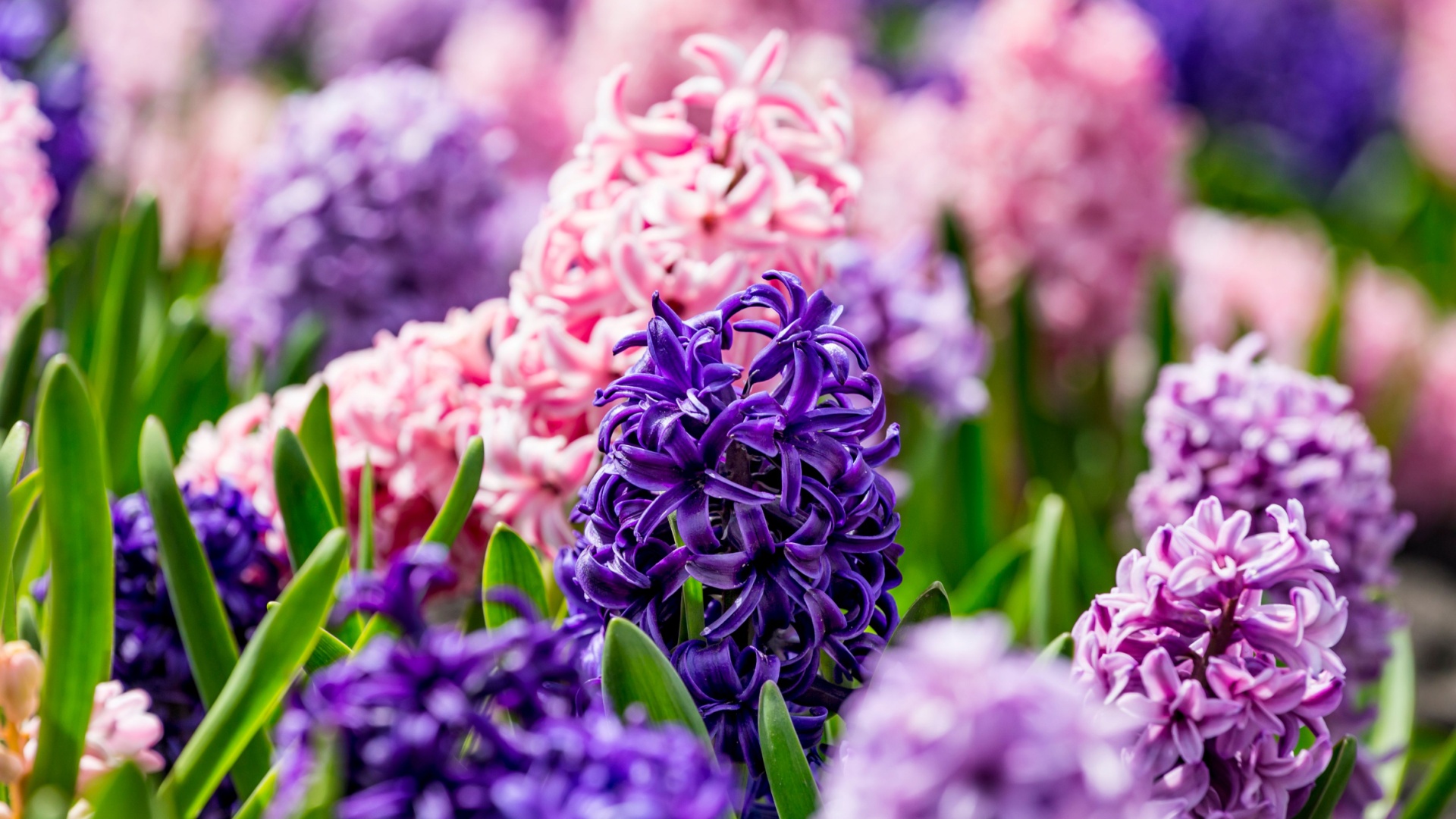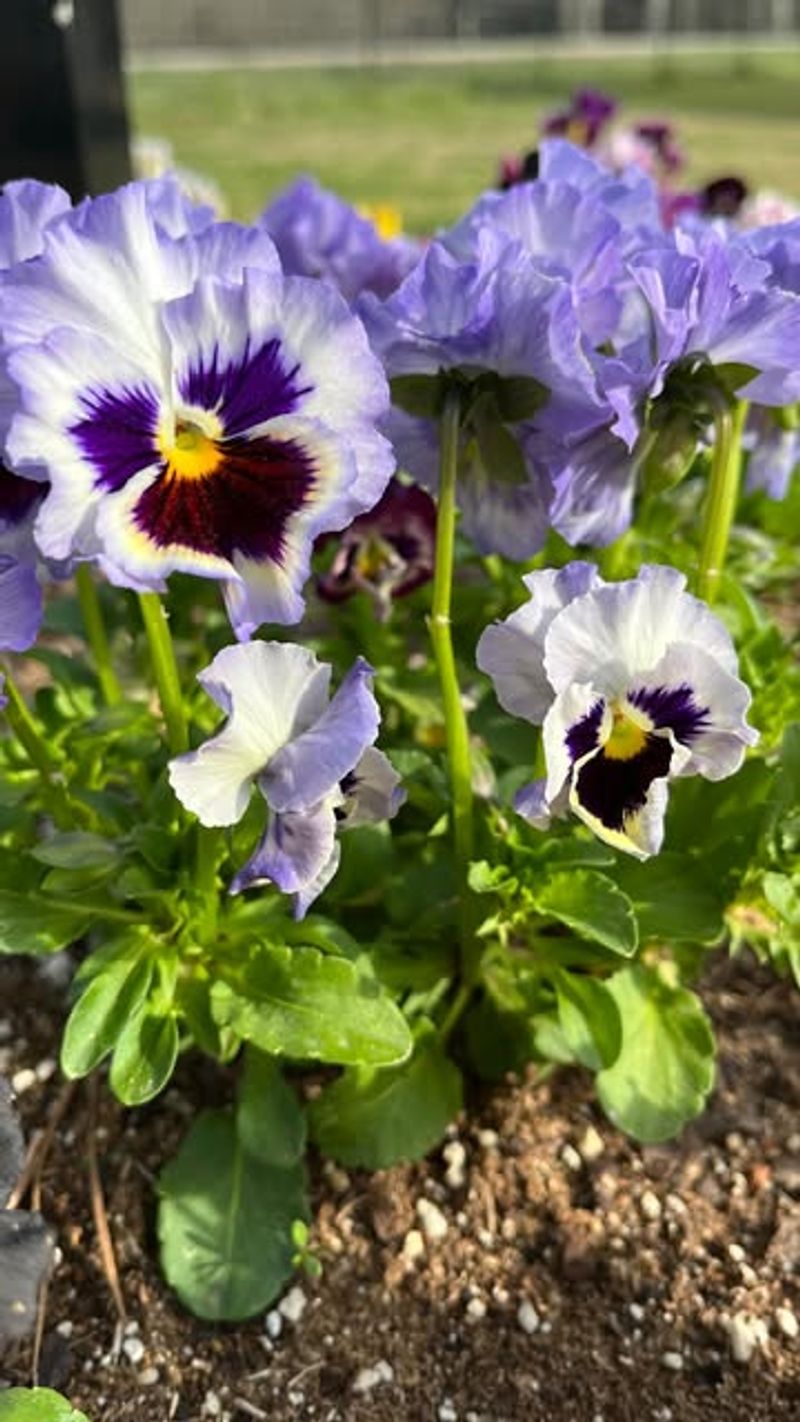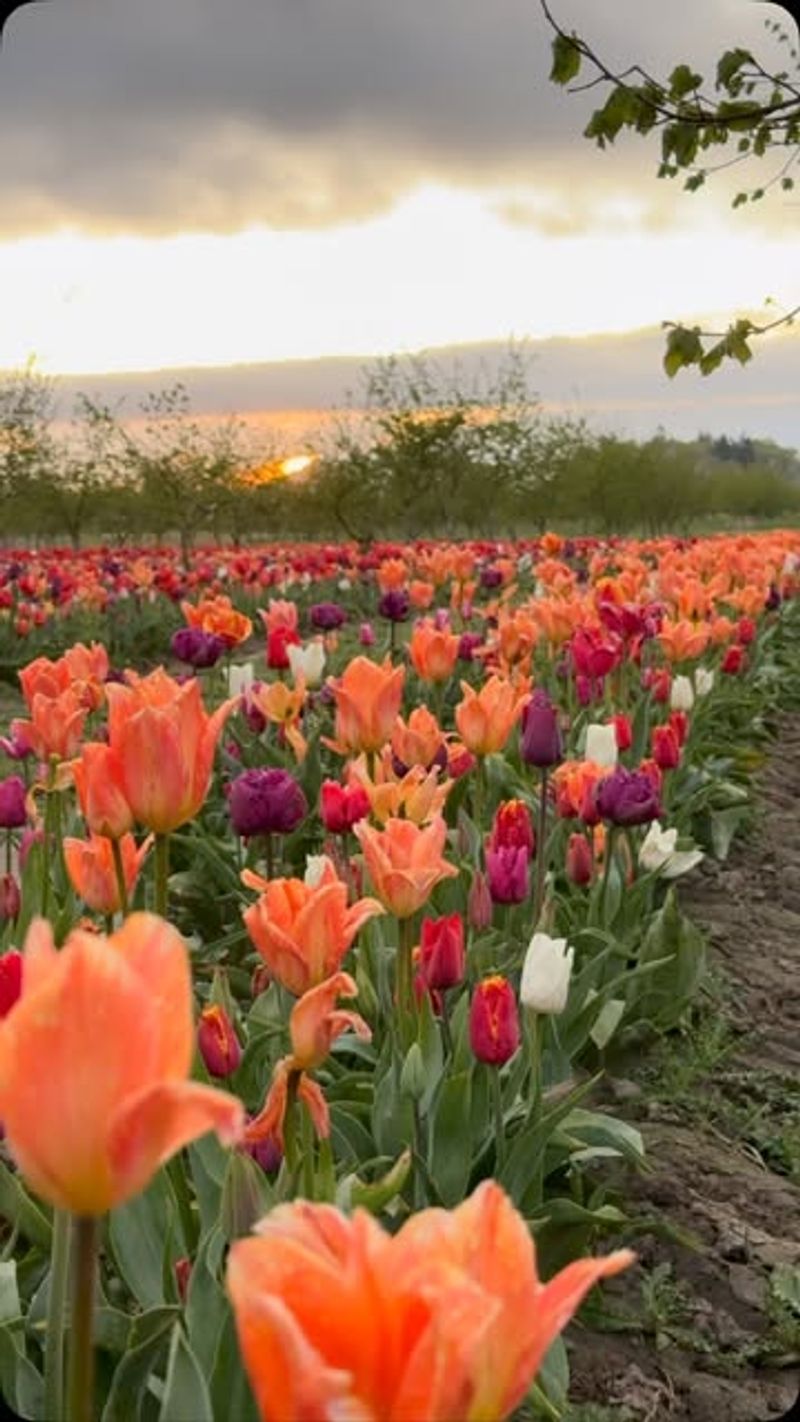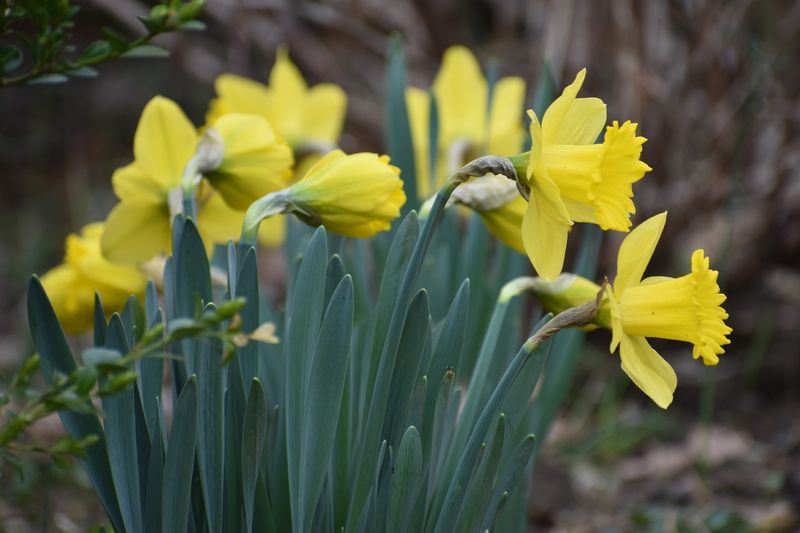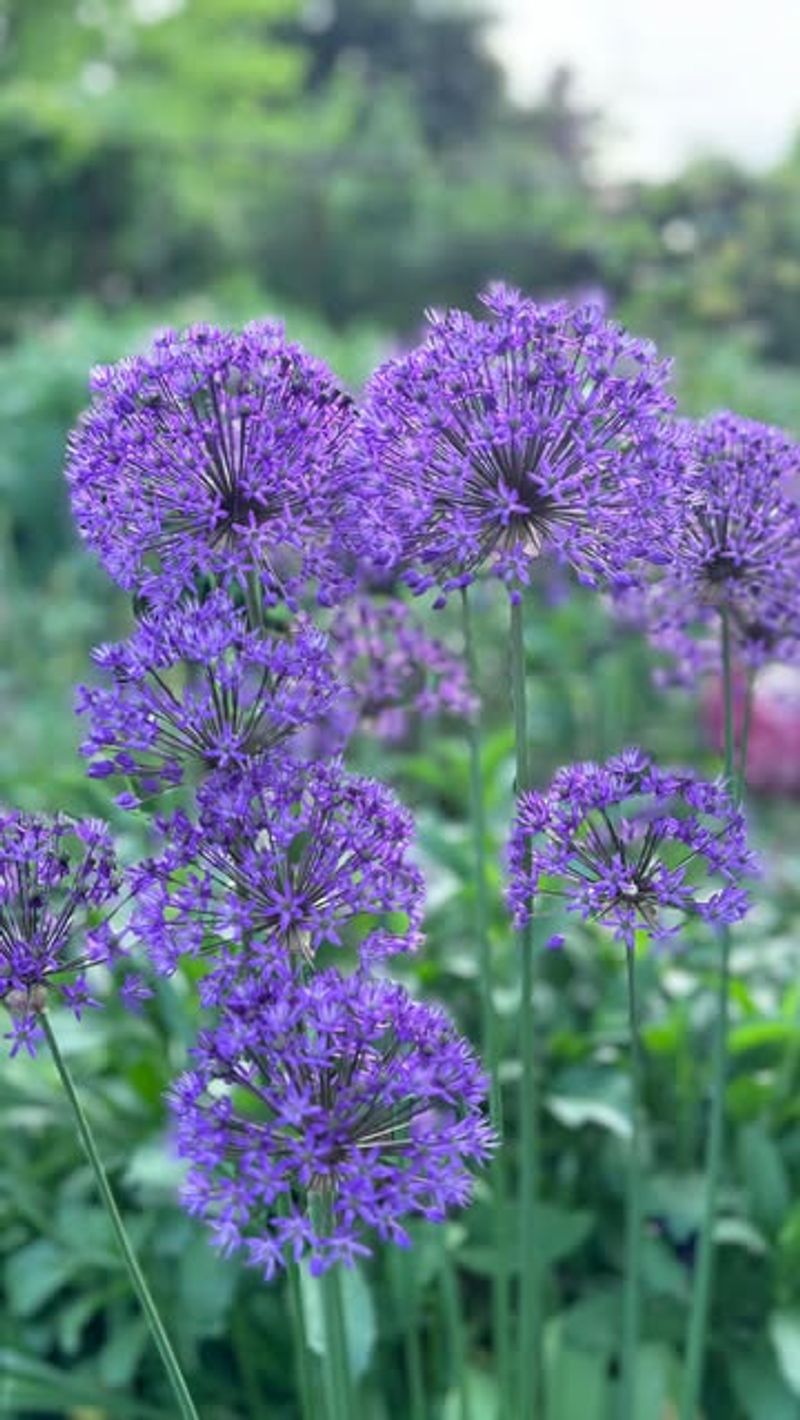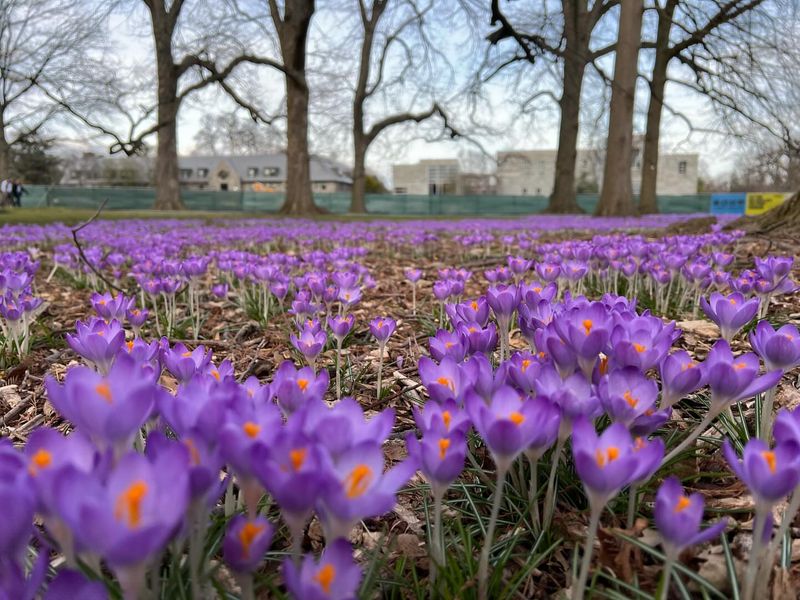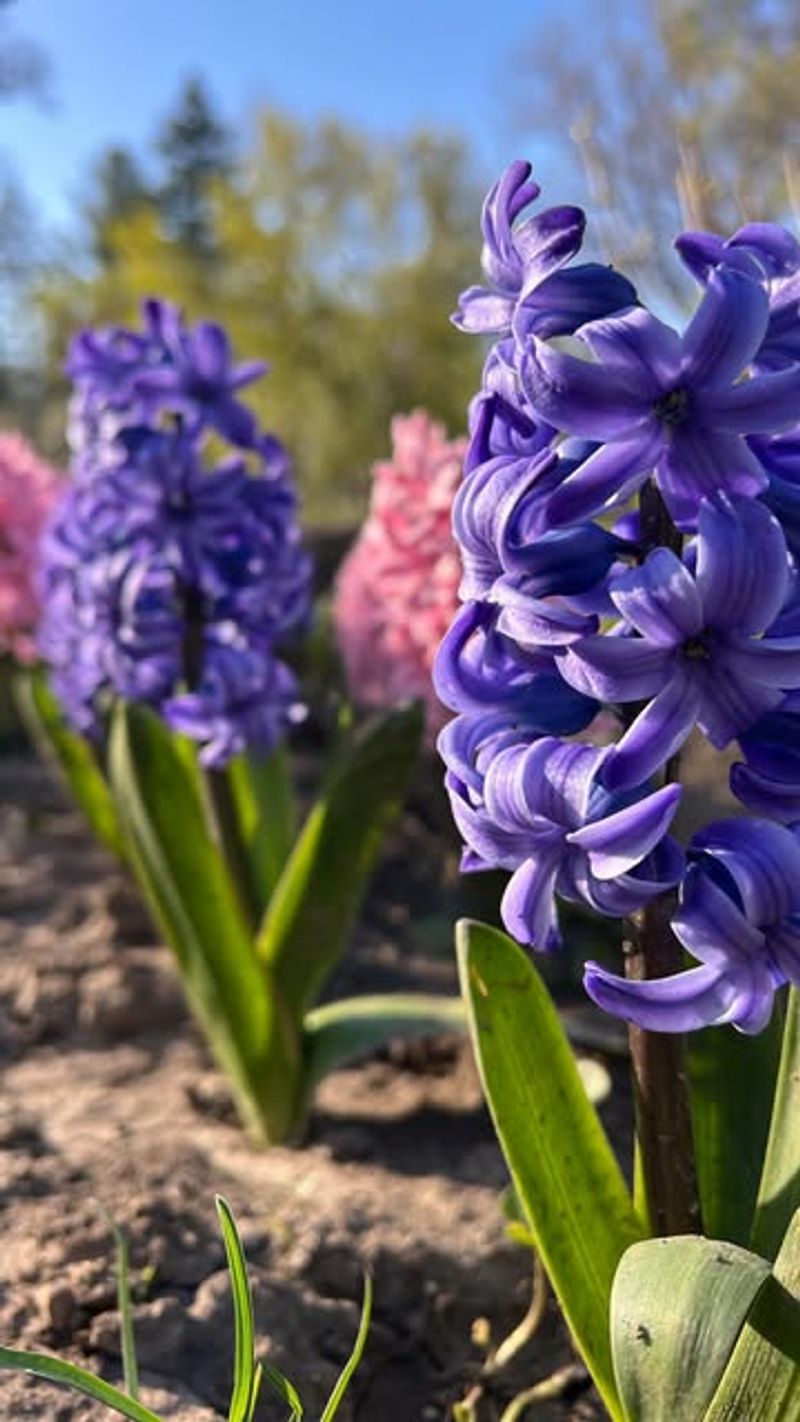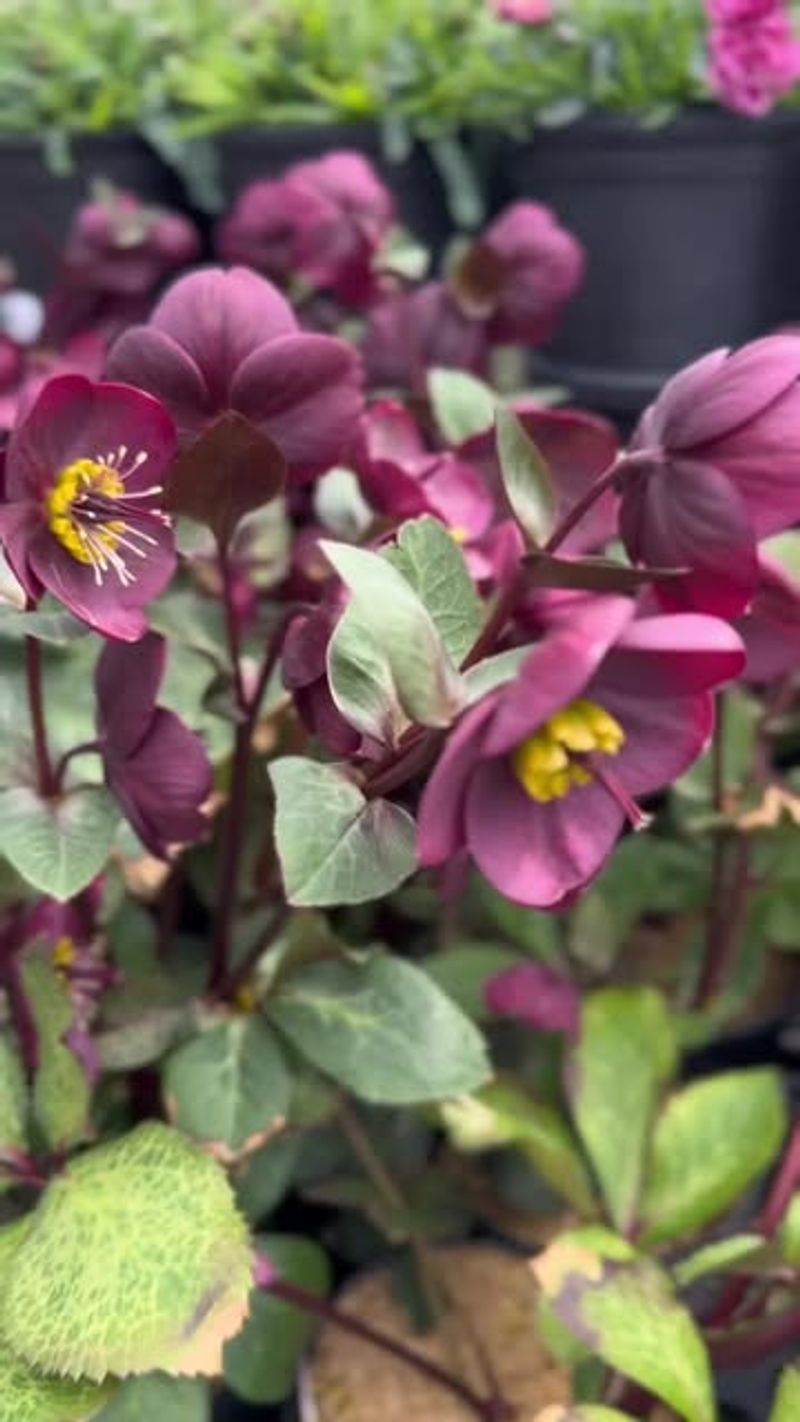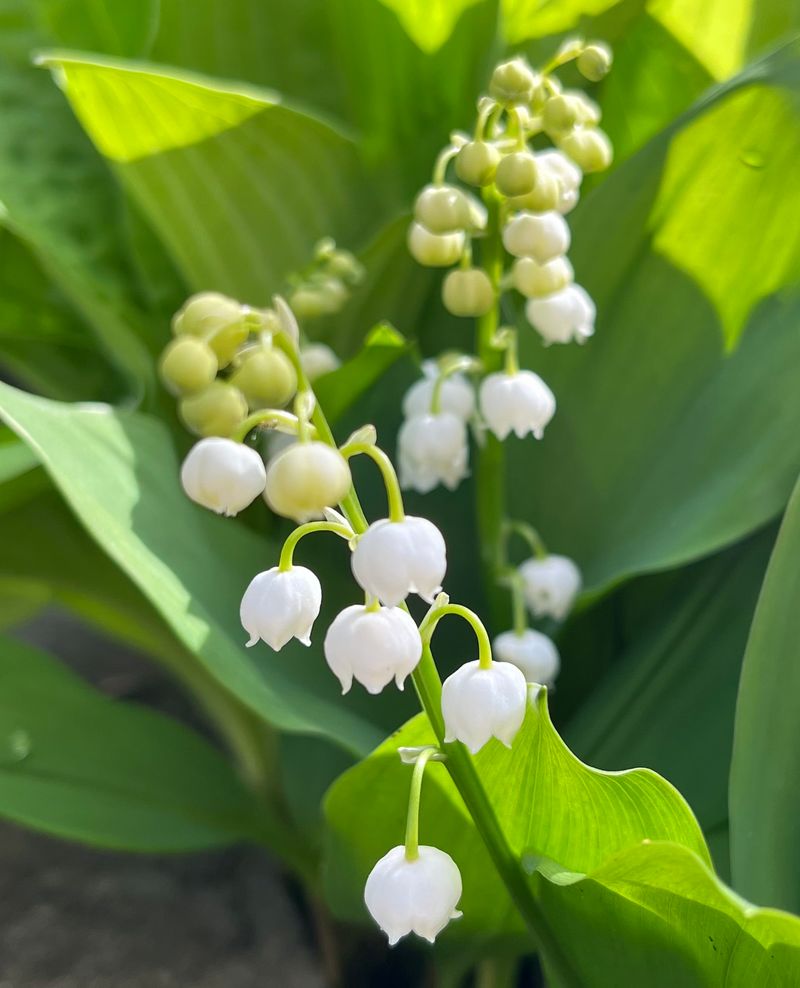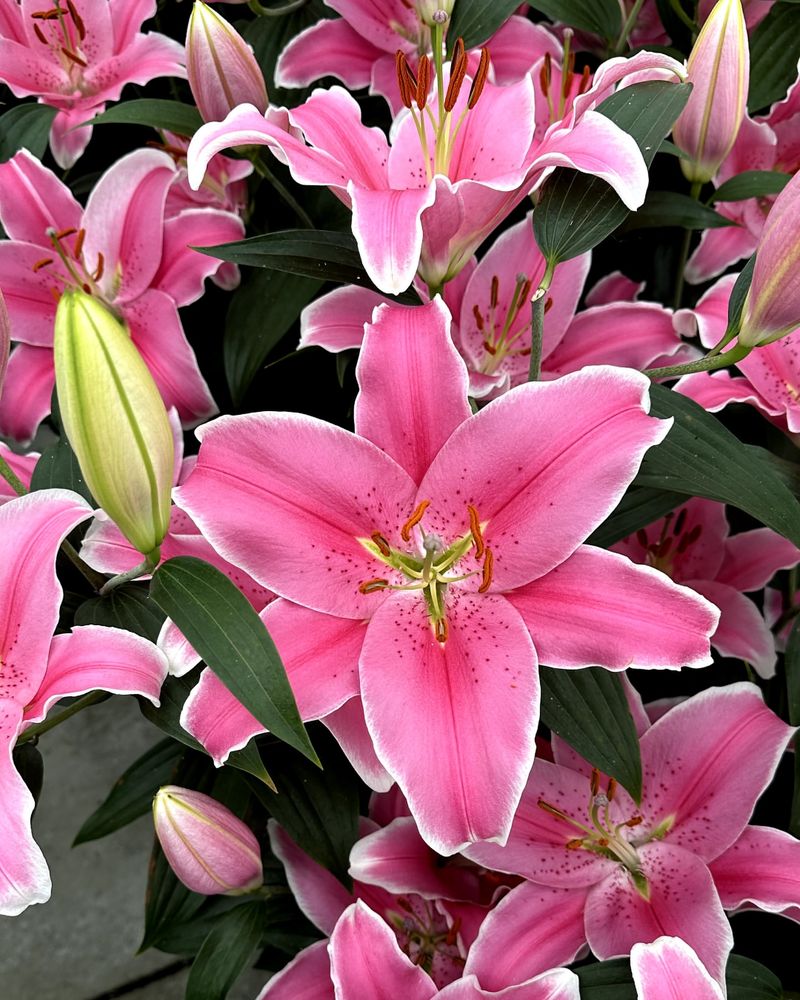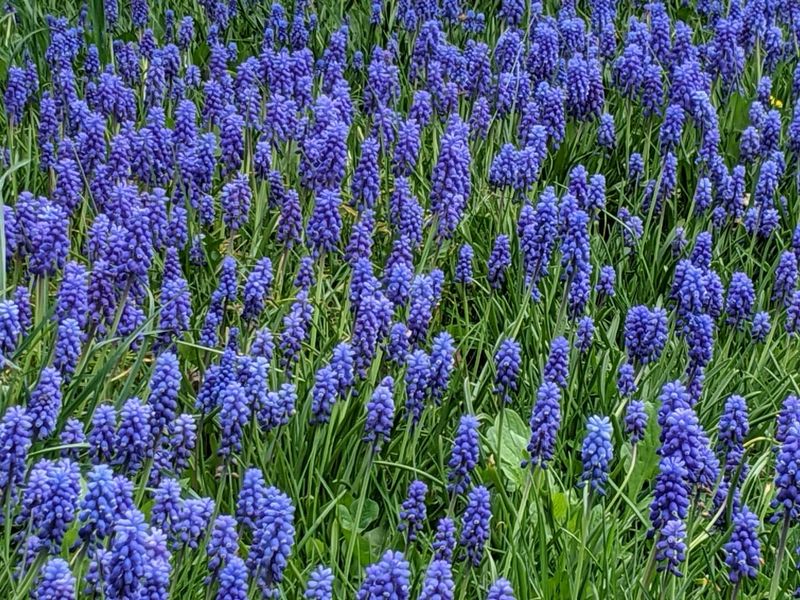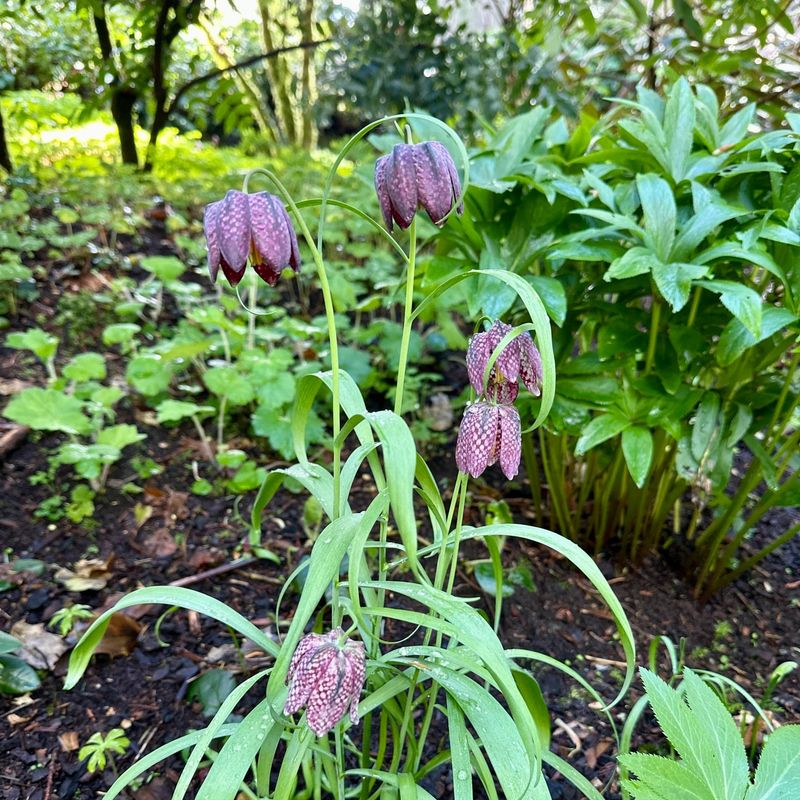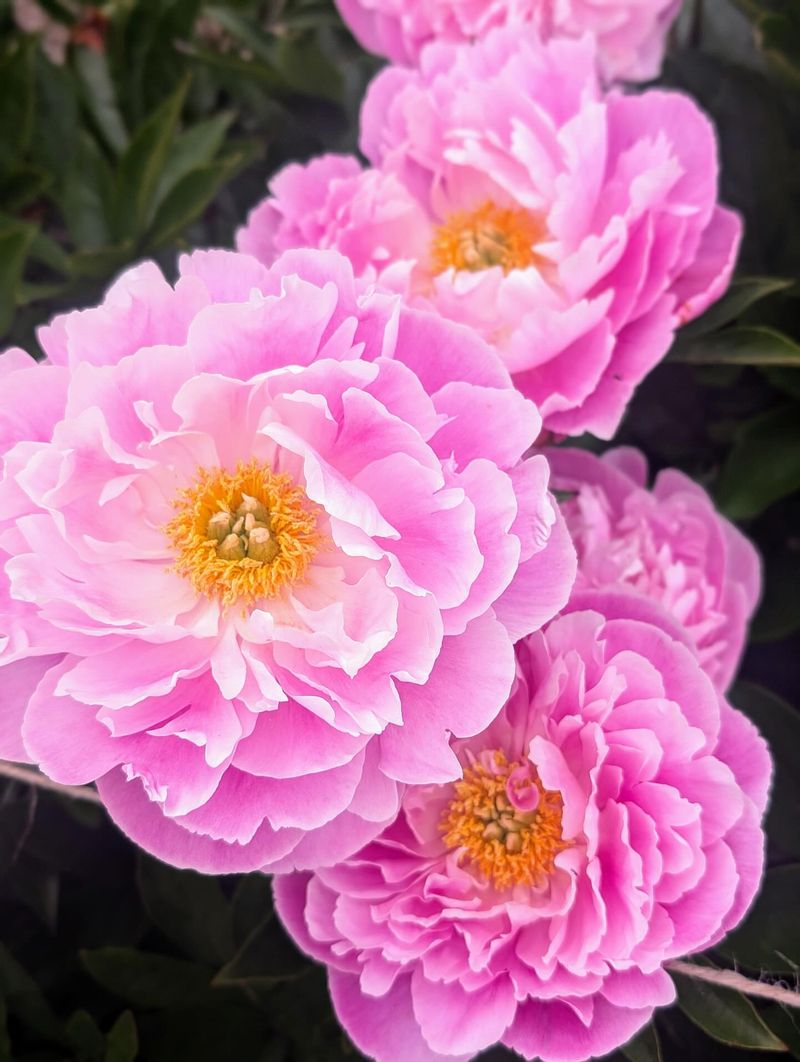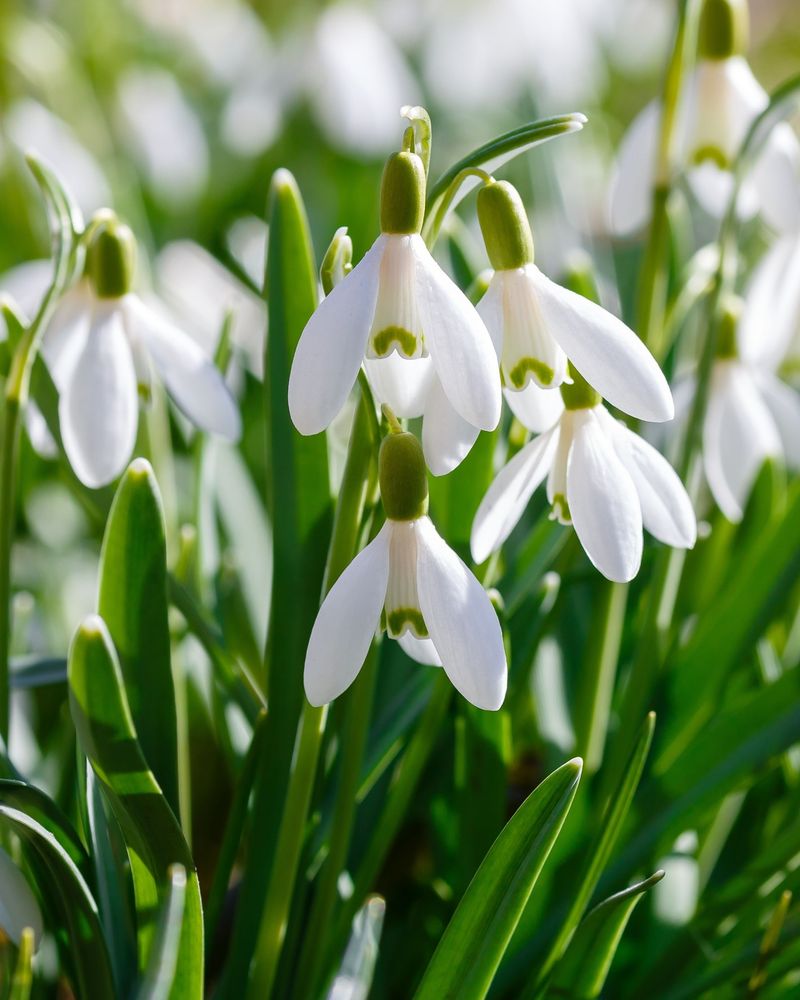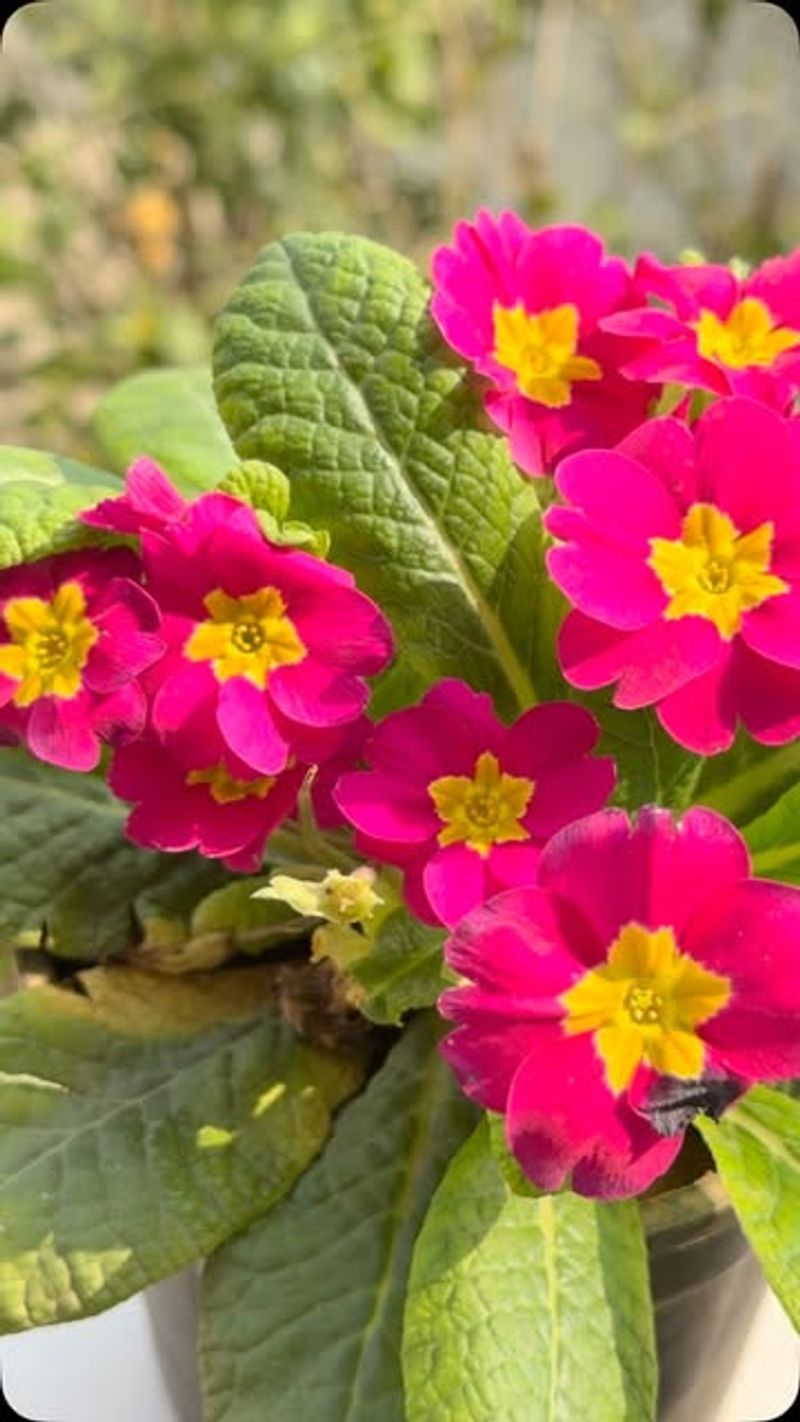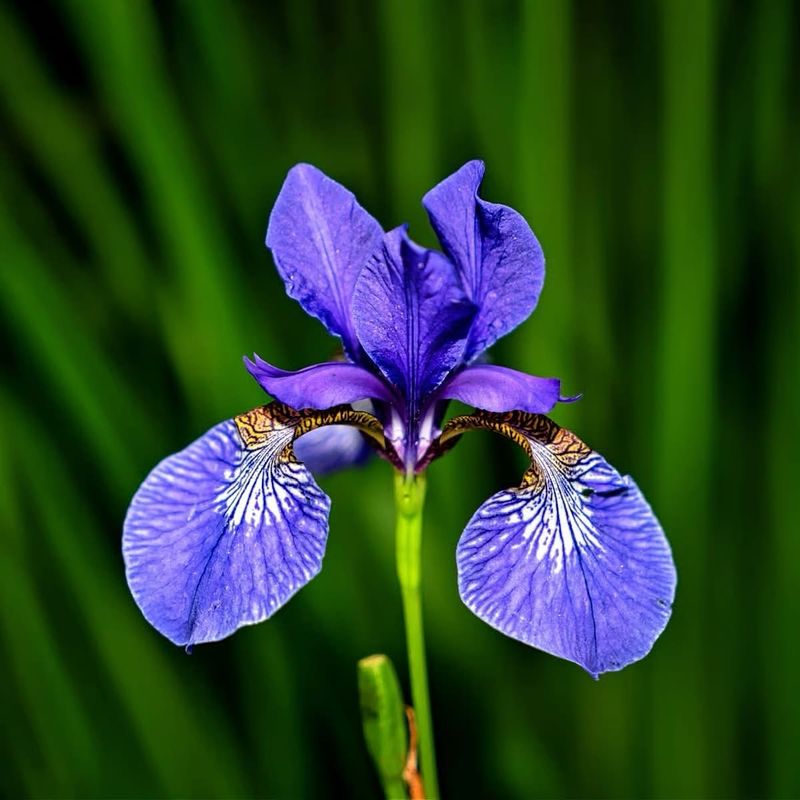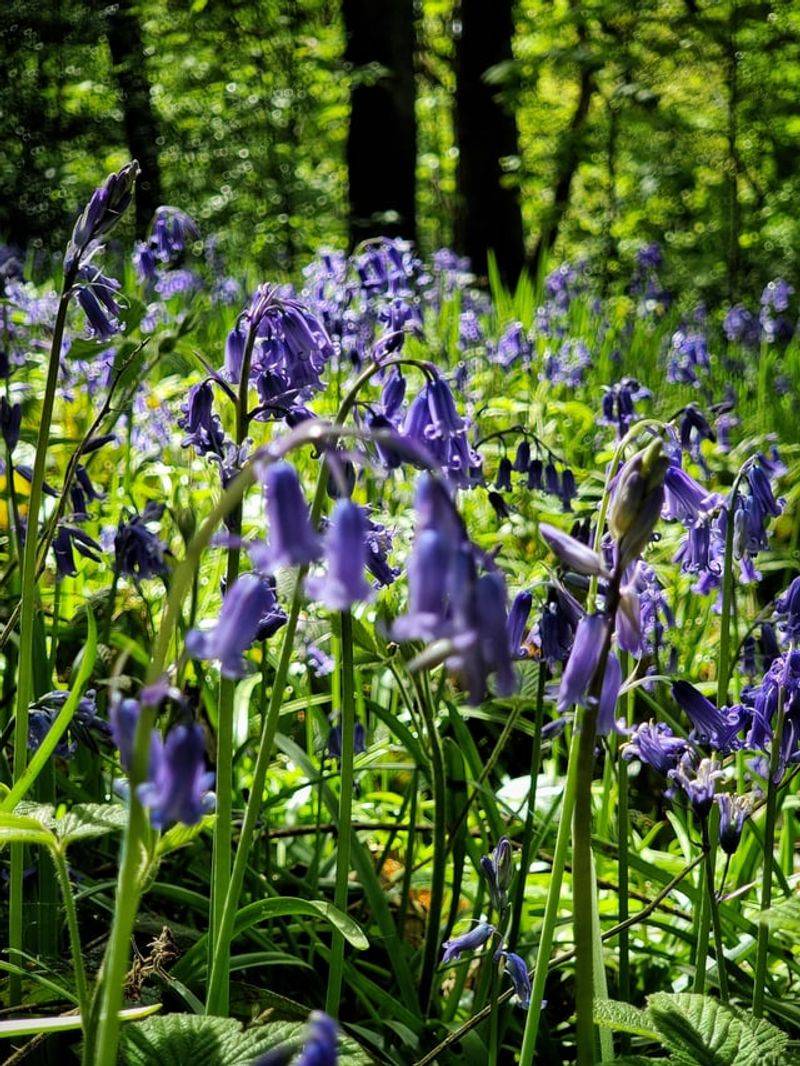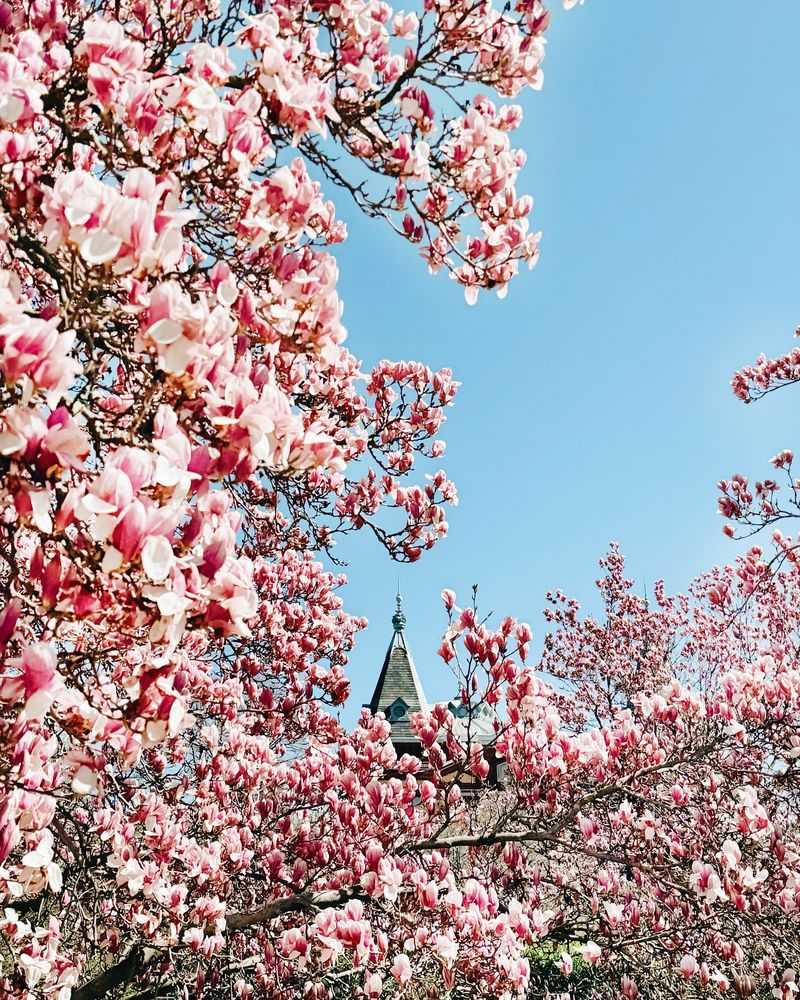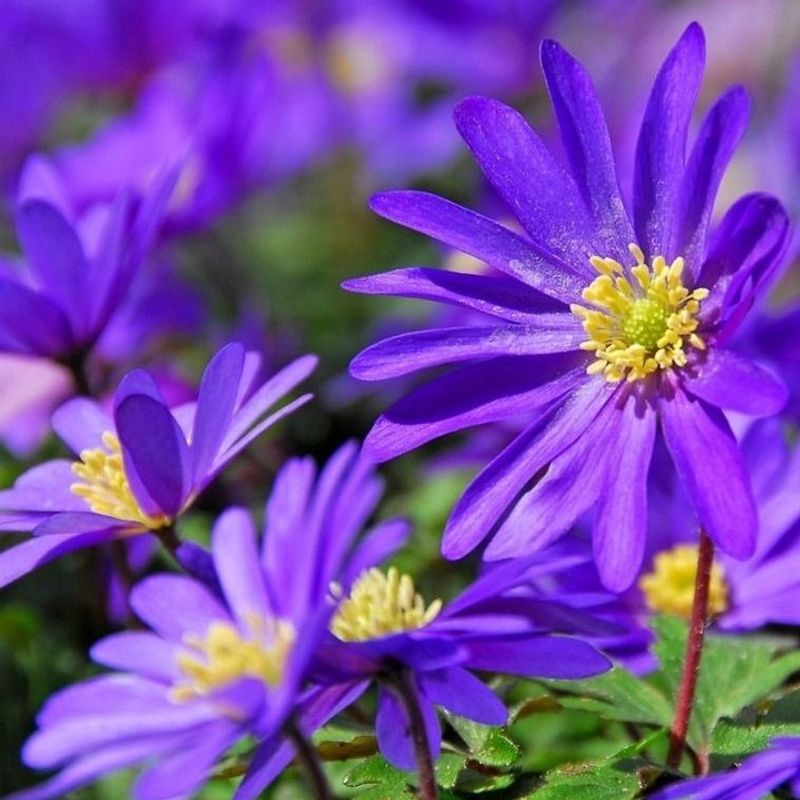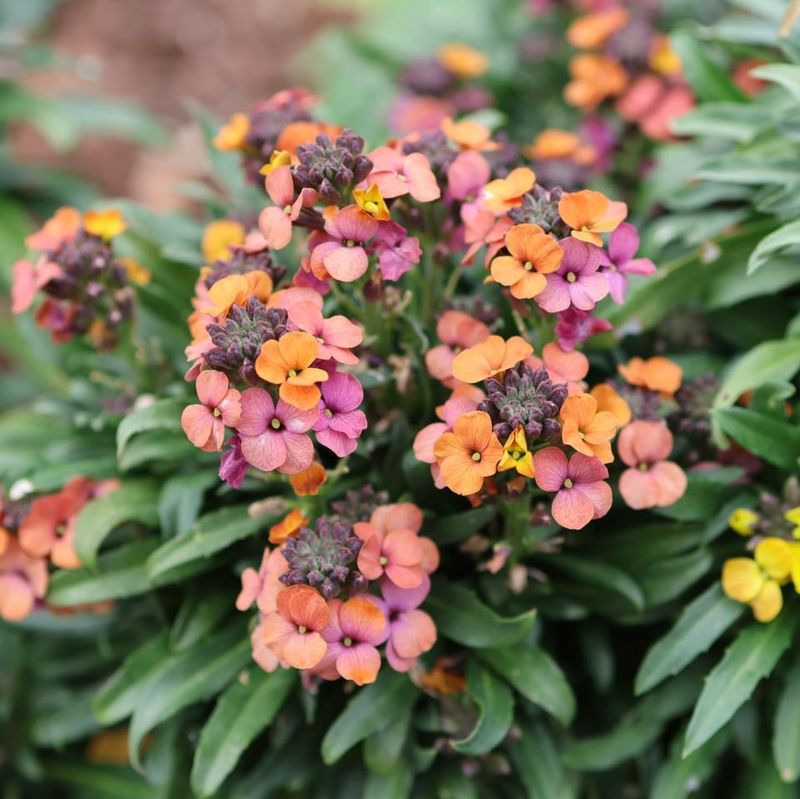Fall planting can be a gardener’s secret weapon in Washington State. Getting flowers in the ground before the first frost gives them time to establish strong roots during winter.
Come spring, these hardy blooms will reward you with earlier flowers and more vigorous growth than their spring-planted counterparts.
1. Cheerful Pansies
Pansies thrive in Washington’s cool autumn temperatures. Their smiling faces come in nearly every color imaginable, brightening winter gardens when other plants have gone dormant.
Plant them in well-drained soil with plenty of organic matter. In milder parts of Washington like Seattle and Tacoma, pansies often bloom straight through winter, making them perfect for containers near entryways.
2. Vibrant Tulips
Nothing says spring in Washington quite like tulips. Fall is actually the perfect time to plant these iconic bulbs, allowing them to chill during winter—a necessary step for spectacular spring blooms.
Plant tulip bulbs about 6-8 inches deep in well-drained soil. For a stunning display, group at least 12 bulbs of the same variety together. The Skagit Valley’s famous tulip fields all begin with fall planting!
3. Dependable Daffodils
Deer-resistant and long-lived, daffodils are garden workhorses that return year after year. Their cheerful yellow blooms announce spring’s arrival across Washington gardens.
Plant daffodil bulbs in September or October, about twice as deep as the bulb is tall. Choose a sunny spot with good drainage. Many daffodil varieties will naturalize, creating larger clumps of flowers each year without additional work from you.
4. Stunning Alliums
Imagine perfect purple spheres floating above your garden—that’s the magic of alliums. These architectural beauties add drama to Washington gardens and are incredibly easy to grow.
Fall-planted allium bulbs develop strong roots during winter. They bloom in late spring to early summer, filling the gap between spring bulbs and summer perennials. Bonus: deer and rodents typically avoid them due to their onion-like scent.
5. Elegant Crocus
Often the very first flowers to emerge, sometimes even through melting snow, crocus bring welcome color to late-winter Washington landscapes. Their delicate cups in purple, yellow, white, and striped varieties signal winter’s end.
Plant crocus corms just 3-4 inches deep in fall. They’ll multiply over time, creating charming drifts of color. Try planting them in lawn areas for a meadow effect—just delay mowing until their foliage yellows.
6. Fragrant Hyacinths
The sweet perfume of hyacinths can fill an entire garden with fragrance. Their tightly-packed flower spikes in blue, pink, white, and purple create focal points in spring borders.
Plant hyacinth bulbs in fall, about 6 inches deep in well-drained soil. They perform beautifully in Washington’s climate, especially in areas with good winter chill. For indoor enjoyment, try “forcing” a few bulbs in vases to bloom during winter.
7. Hardy Hellebores
Known as Lenten roses, hellebores are woodland wonders that bloom in late winter when gardens need color most. Their nodding flowers in shades of white, pink, purple, and green last for months.
Fall planting gives hellebores time to establish before their blooming season. They thrive in the dappled shade common under Washington’s evergreens and deciduous trees. Once established, they’re drought-tolerant and largely maintenance-free.
8. Lovely Lily-of-the-Valley
Tiny bell-shaped flowers with an intoxicating fragrance make lily-of-the-valley a woodland garden favorite. The dainty white blooms appear in spring above glossy green leaves.
Fall is ideal for planting lily-of-the-valley pips (roots) in Washington gardens. They prefer partial to full shade and moist, humus-rich soil. Be mindful of their spreading habit—they make excellent groundcovers in areas where other plants struggle.
9. Majestic Oriental Lilies
Few flowers make a statement like Oriental lilies with their massive, fragrant blooms. Their sweet perfume can fill an entire garden on summer evenings, making them worth every bit of anticipation.
Plant lily bulbs in fall, about 6 inches deep in well-drained soil. They perform beautifully throughout Washington, particularly in areas with full morning sun and afternoon shade. Add a layer of mulch after planting to protect the bulbs.
10. Versatile Muscari
Commonly called grape hyacinths, muscari create rivers of blue in spring gardens. Their tiny, tightly-packed blue florets resemble miniature bunches of grapes atop slender stems.
Fall planting allows muscari to develop strong roots before their spring show. They naturalize readily in Washington gardens, multiplying year after year. Try planting them under deciduous trees or along pathways where their blue drifts can be appreciated up close.
11. Dramatic Fritillaria
Fritillaria bring unusual beauty to spring gardens with their pendant, bell-shaped flowers. The checkered patterns on some varieties have earned them the nickname “checkered lilies.”
Plant fritillaria bulbs in fall, about 6 inches deep in well-drained soil rich in organic matter. They appreciate Washington’s cool spring temperatures. The crown imperial variety makes a dramatic statement with its circle of downward-facing blooms topped by a tuft of leaves.
12. Showy Peonies
Peonies are garden royalty, producing massive, fragrant blooms that can last for generations. Fall is the only time to plant these long-lived perennials in Washington gardens.
Plant peony roots with the “eyes” (growing points) just 1-2 inches below soil level. They prefer full sun and well-drained soil. Though slow to establish, peonies reward patience—some plants have been known to bloom for over 100 years in the same spot!
13. Cheerful Snowdrops
Snowdrops are among the earliest harbingers of spring, sometimes blooming as early as January in western Washington. Their delicate white blooms, often appearing through snow, bring hope during the darkest days.
Plant snowdrop bulbs in fall, about 3 inches deep in humus-rich soil. They prefer dappled shade and will naturalize over time. For the best display, plant them in drifts under deciduous trees where they’ll get sun in winter and shade in summer.
14. Captivating Anemones
Fall-planted anemones produce charming poppy-like flowers in spring. Their jewel-toned blooms in blue, red, pink, and white dance above ferny foliage on slender stems.
Soak anemone corms for a few hours before planting about 2 inches deep in fall. They appreciate well-drained soil and perform beautifully in Washington’s maritime climate. For continuous blooms, consider planting fall-blooming anemone varieties at the same time.
15. Delicate Primroses
Primroses bring welcome color to Washington gardens in late winter and early spring. Their cheerful faces in yellow, pink, purple, blue, and white brighten shady spots when little else is blooming.
Fall planting gives primroses time to establish strong roots. They thrive in the cool, moist conditions common in Washington, particularly in partial shade. Pacific Northwest native varieties are especially suited to our climate and will often self-seed gently.
16. Striking Iris
From delicate Siberian iris to showy bearded varieties, fall is ideal for planting these garden classics. Their sword-like foliage provides structure even when not in bloom.
Plant iris rhizomes in fall with the top surface exposed to sunlight. They prefer well-drained soil and full sun in most of Washington. Bearded iris especially benefit from fall planting, giving them time to establish before their magnificent spring and early summer blooms.
17. Woodland Bluebells
English bluebells create magical carpets of nodding blue flowers in spring. Their sweet fragrance and graceful form bring woodland charm to Washington gardens.
Plant bluebell bulbs in fall, about 4 inches deep in humus-rich soil. They thrive in the dappled shade under deciduous trees, mimicking their natural woodland habitat. Once established, they’ll spread gradually to form breathtaking drifts of blue each spring.
18. Magnificent Magnolias
Fall is perfect for planting magnolia trees, allowing their roots to establish before spring’s glorious blooms. Their large, fragrant flowers in white, pink, or purple appear before the leaves, creating dramatic silhouettes.
Choose a sheltered location away from harsh winds. Star magnolias and saucer magnolias perform particularly well in Washington’s climate. Though technically trees rather than flowers, their spectacular blooms earn them a place on any flower lover’s planting list.
19. Colorful Anemone Blanda
Often called Grecian windflowers, these daisy-like blooms create pools of color in early spring. Their star-shaped flowers in blue, pink, and white open wide in sunlight, closing at night and on cloudy days.
Plant anemone blanda corms in fall, about 3 inches deep. They naturalize beautifully in Washington gardens, especially in areas with good drainage. Try planting them in rock gardens, under shrubs, or at the front of borders where their low-growing beauty can be appreciated.
20. Reliable Wallflowers
Wallflowers bring spicy fragrance and warm colors to Washington gardens in early spring. Their clusters of yellow, orange, red, and purple blooms atop silvery foliage attract early pollinators.
Fall planting allows wallflowers to develop strong roots before winter. They perform best in full sun and well-drained soil. Though short-lived perennials, they often self-seed gently, maintaining their presence in the garden year after year.

